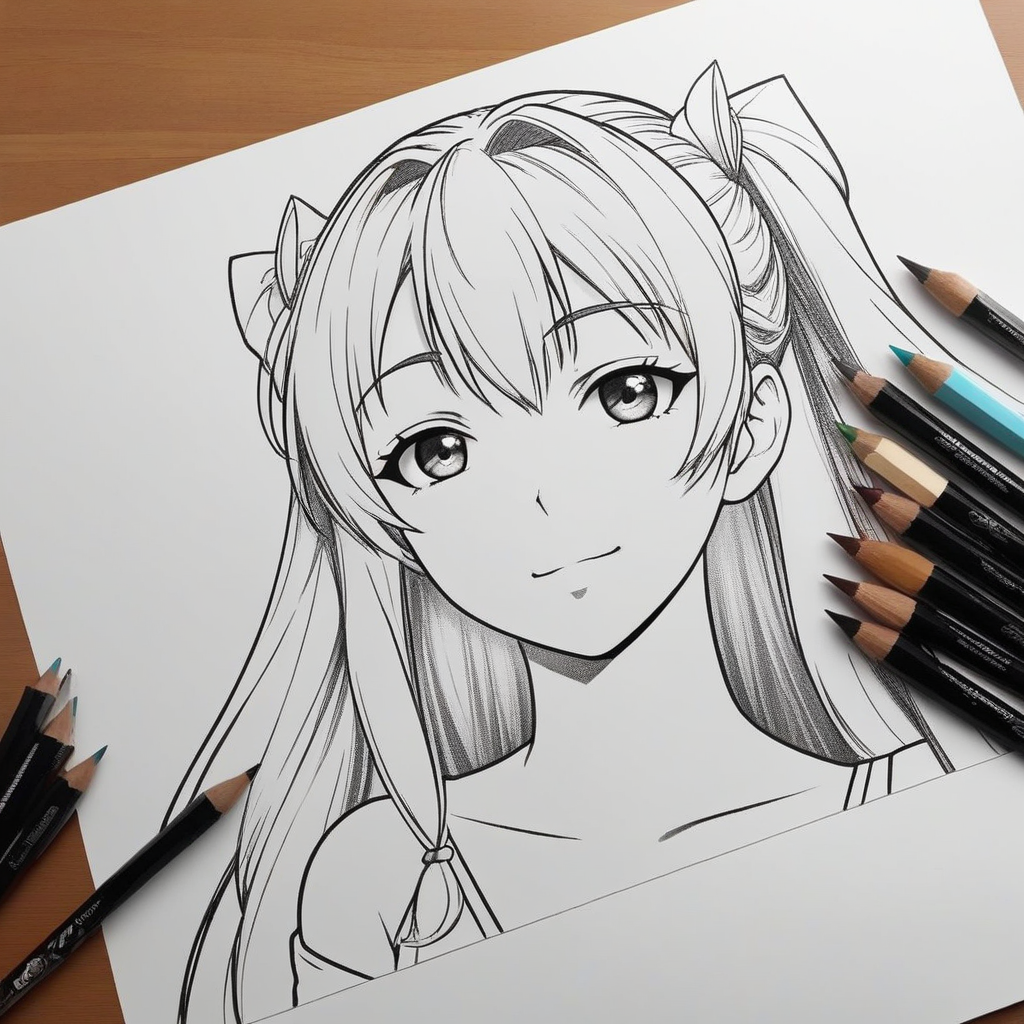Unleashing Your Inner Artist: A Comprehensive Guide to Drawing Anime
Welcome to the captivating world of anime art! This style, known for its expressive characters, dramatic action, and vibrant storytelling, has captured hearts worldwide. If you’ve ever dreamed of creating your own anime characters or scenes, this guide is your roadmap to artistic expression. We’ll delve into the fundamentals, explore essential techniques, and equip you with the knowledge to bring your anime visions to life.
Embracing the Foundations: Building Blocks of Anime
Before diving into dynamic poses and elaborate costumes, let’s solidify the core elements that define anime aesthetics.
-
Anatomy with a Twist: Anime proportions often deviate from realism, with characters typically having large, expressive eyes, a smaller nose and mouth, and elongated limbs. This stylization allows for a wider range of emotions and emphasizes specific features.
-
Facial Features in Focus: Eyes are undoubtedly the focal point of anime characters. Mastering different eye shapes, sizes, and expressions is crucial. Ears are generally simpler and positioned lower on the head compared to real-life proportions. Hairstyles are another area for creative freedom, with vibrant colors, elaborate braids, and gravity-defying spikes being common.
-
Body Language Speaks Volumes: Anime characters often use exaggerated body language to convey emotions. Understanding basic human anatomy will help you depict movement and posture effectively, even with the stylized proportions.
-
Perspective with Purpose: While anime can utilize perspective techniques like vanishing points, it often plays a less rigid role compared to realistic art. Experiment with angles and perspectives to create dynamic compositions that enhance the storytelling.
Tools of the Trade: Gearing Up for Anime Creation
Now that you have a grasp of the fundamentals, let’s explore the tools that will translate your vision onto paper:
-
Pencils: A good set of drawing pencils (HB, 2B, 4B, etc.) allows for varying line weights and creating a foundation for your drawing.
-
Eraser: Mistakes are inevitable! A good eraser helps you refine your work without damaging the paper.
-
Pens: Once you’re comfortable with your sketch, consider using micron pens or other fine-tipped pens for clean outlines.
-
Drawing Paper: Smooth, high-quality paper like Bristol board is ideal for creating clean lines and taking ink well.
-
Optional Tools: Experiment with different tools like blending stumps for smoother shadows, colored pencils for adding vibrancy, or markers for bold outlines.
Step-by-Step: Bringing an Anime Character to Life
Let’s walk through the process of creating a basic anime character:
-
Conceptualization: Sketch some rough ideas to solidify your character’s personality, appearance, and overall design. Brainstorm their clothing style, hairstyle, and any unique features.
-
Head and Face: Draw a circle as a base for the head. Divide it with horizontal and vertical lines to position the facial features. Sketch the eyes, starting with the upper and lower eyelids and adding details like irises, pupils, and reflections. Draw the nose and mouth based on your chosen style.
-
Hair and Body: Sketch the hairstyle, keeping in mind anime’s often gravity-defying nature. Don’t be afraid to experiment with volume and texture. Next, draw the body with basic shapes like ovals and cylinders for the torso, limbs, and head. Refine these shapes to create a more dynamic and natural-looking pose.
-
Clothing and Details: Add clothing that reflects your character’s personality and background. Consider folds, wrinkles, and textures for added realism. Don’t forget accessories like belts, bags, or jewelry!
-
Refine and Refine: Clean up your sketch using an eraser and refine the lines with pens or a fine-tipped pencil. Pay attention to details like shading and highlights.
-
Inking (Optional): Once satisfied with your sketch, consider outlining it with pens for a clean and finished look.
Remember, this is just a basic guide! Experiment with different approaches and don’t be afraid to develop your own unique style.
Mastering the Nuances: Techniques for Enhancing Your Anime Art
Shading and Lighting:
Shading adds depth and dimension to your artwork. Experiment with different techniques like hatching, cross-hatching, and stippling to create shadows and highlights. Consider your light source to create realistic shading effects.
Color Theory:
Anime art is known for its vibrant colors. Understanding basic color theory will help you choose harmonious color palettes for your characters and backgrounds. Consider using complementary colors or analogous color schemes to create visually appealing compositions.
Perspective:
While perspective can be used more loosely in anime, understanding basic perspective principles can still be beneficial. It allows you to create depth in your scenes, especially for backgrounds and dynamic poses.
Movement and Action:
Anime excels at depicting action and movement. Study references.



